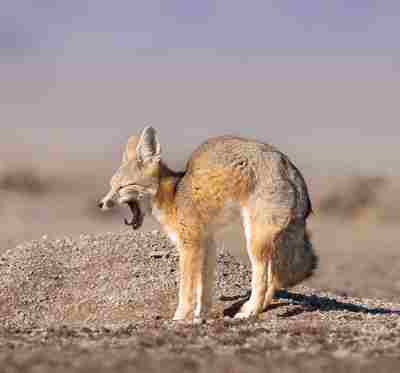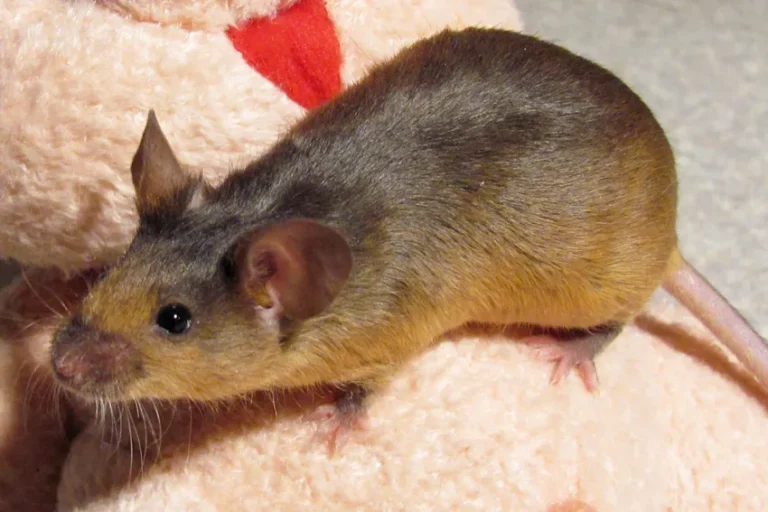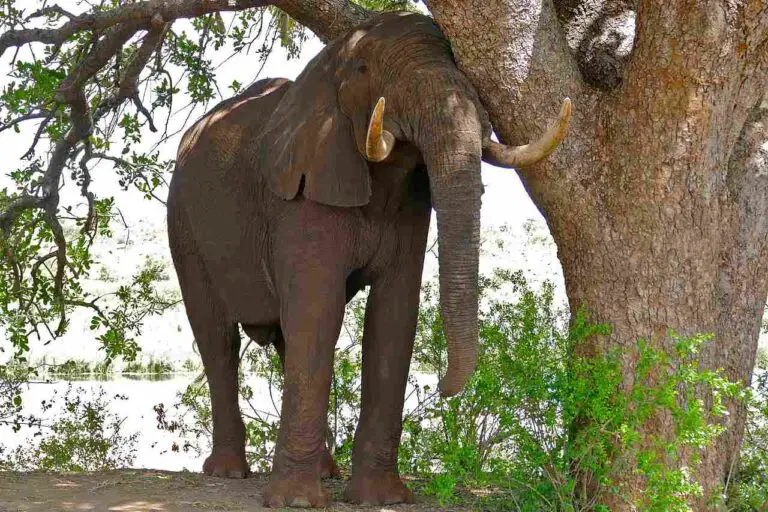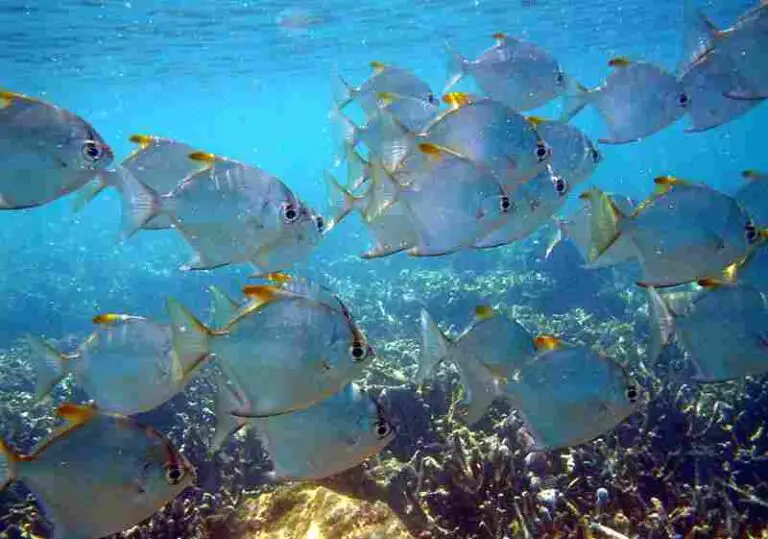9 Mojave Desert Biotic Factors and Their Functions
Mojave Desert Biotic Factors are; producers, herbivores, carnivores, omnivores, decomposers, mutualism, parasitism, predation, and competition.
This article discusses Mojave Desert biotic Factors, their relevance and functions, as follows;
1). Producers: One of the Mojave Desert Biotic Factors
Producers are one of the fundamental biotic factors in the Mojave Desert ecosystem. These organisms can be found at the bottom of the desert food web, and are instrumental in providing chemical bioenergy for the entire ecological community.
In the Mojave Desert, several types of plants act as producers, including Joshua trees, cacti, brittlebush, creosote trees, and various low grasses.
Ecological Relevance and Functions of Producers in the Mojave Desert
Contexts and concepts that can be used to discuss the ecological relevance and functions of producers in the Mojave Desert include; energy resource(s), food for herbivores, habitat and shade, water conservation, soil stabilization, ecosystem resilience, and biodiversity support.
Through the biochemical process of photosynthesis, desert producers convert solar radiation into chemical energy, which is mainly stored in the form of sugars/biomass. This energy source serves as the foundational element for the entire food chain in the Mojave Desert.
Producers, such as cacti and creosote bushes, are consumed by herbivorous animals, including some desert insects, rodents, and herbivorous reptiles. These plants provide essential sustenance for a variety of such herbivorous species.
Desert plants, especially the larger species like Joshua trees, often provide habitat and shade for a range of desert-dwelling creatures. These plants serve as protection from extreme temperatures, and as shelter.
Several desert plants, including cacti, have adapted to conserve water. Their water-storing tissues are crucial for surviving in the arid desert environment.
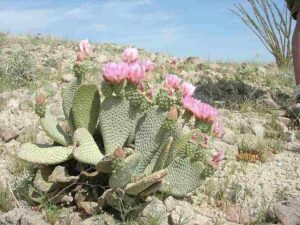
The root systems of desert plants help to stabilize the fragile desert soil, often mitigating erosion and promoting overall ecosystem productivity.
Also, desert plants are involved in maintaining ecosystem resilience by withstanding extreme temperatures and scarce water resources, which in turn helps to ensure the survival of other species.
Desert plants support a diverse range of herbivores, which, in turn, sustain predators. This significant diversity of life is a hallmark of healthy desert ecosystems.
Common Plants in the Mojave Desert
One of the most common and pervasive plants in the Mojave Desert is the creosote bush (Larrea tridentata).
This hardy plant is resilient and can be found thriving across various elevations in the desert, making it a keystone species due to its relative abundance and ecological importance.
The Mojave Desert is inhabited by about 1,500 plant taxa, with over 200 of them being endemic to the state. This rich diversity of plant species is key to the complexity and ecological significance of the desert ecosystem.
2). Herbivores
Herbivores are a vital biotic factor in the Mojave Desert ecosystem. These animals occupy a vital position in the desert food chain, as they mainly consume plant materials.
The Mojave Desert is home to various herbivores, each of which is adapted to the challenging conditions of this arid terrain.
Ecological Relevance and Functions of Herbivores
Discussions about the ecological relevance and functions of herbivores in the Mojave Desert may include concepts like; plant consumption, seed dispersal, ecosystem engineering, energy transfer, herbivore adaptations, biodiversity support, and food provision for predators.
Herbivores in the Mojave Desert, such as antelope ground squirrels, kangaroo rats, and desert tortoises, are known to consume a variety of desert plants. These herbivores help to regulate plant populations by consuming individual plants, a function which, in turn, influences the structural configuration, and biogenic composition of plant communities.
Several herbivorous desert animals unintentionally aid in seed dispersal by consuming fruits and plant parts and later excreting the seeds in different locations. This dispersal function contributes to the distribution, continuity and propagation of desert plants.
Some herbivores, such as desert tortoises, can be considered ecosystem engineers because their foraging activities affect the density and diversity of vegetation. These effects can create microhabitats and influence the survival of other species.
Herbivores are a core part of the energy flow scheme within the desert ecosystem. They convert plant matter into bioenergy through feeding, and serve as a source of nutrition for predators.
Mojave Desert herbivores have developed diverse adaptations to help them cope with limited water and extreme temperatures. These adaptations include efficient water use and effective thermoregulation strategies.
By altering the plant community through consumption, herbivores indirectly influence the presence, adaptation and distribution of other desert-dwelling species. Their activities contribute to the overall species richness of the desert ecosystem.
Herbivores serve as a major food source for carnivores and omnivores in the Mojave Desert, thereby sustaining predator populations and maintaining a stable ecosystem.
Common Herbivores in the Mojave Desert
Common herbivores in the Mojave Desert include the antelope ground squirrel, kangaroo rat, pack rat, blacktail jackrabbit, desert cottontail, and the iconic desert tortoise (Gopherus agassizii).
The desert tortoise is a well-known herbivore of the Mojave Desert. These tortoises feed on a diet of plants, which include grasses, blossoms, and cacti. They are often seen grazing during the mornings and late afternoons, which makes them a characteristic herbivore of the desert landscape. Desert tortoises are especially notable as selective herbivores.
3). Carnivores: One of the Mojave Desert Biotic Factors
Carnivores have a crucial role to play in the Mojave Desert ecosystem, serving as one of the biotic factors in this arid environment.
These predators are generally adapted to the challenges associated with a desert climate, where prey may be scarce, and water resources limited. Carnivores are themselves a diverse group, and some of the key carnivores in the Mojave Desert include mountain lions, bobcats, coyotes, and golden eagles.
Ecological Relevance and Functions of Carnivores
Some pointers to the ecological resilience and functions of carnivores in the Mojave Desert are; population control, apex predation, diverse diet, seed dispersal, biodegradation and scavenging, and support for microbial communities.
Carnivores help to control the populations of herbivores and other prey species in the desert. By preying on herbivores, they prevent overgrazing and support the overall health of plant communities.
At the apex trophic level of the desert food chain, carnivores are prominent among the top predators. They maintain the equilibrium of resources in the ecosystem, by controlling the numerical abundance of prey species and exerting top-down ecological pressures.
Many desert carnivores display dietary adaptability, consuming various kinds of animal biomass. This flexibility supports their survival in an environment where food resources can be scarce.
Carnivores may contribute to seed dispersal by transporting seeds either in their fur or digestive tracts, thereby aiding in the dispersal of plants across the desert landscape.
Also, carnivores are involved in nutrient cycling through scavenging and consuming the remains of animals that have died due to various causes. This function helps in recycling nutrients back into the ecosystem.
Scat (feces) from carnivores provides a viable nutrient source for microorganisms, and contributes to soil productivity in the desert. These microorganisms can be also instrumental for plant growth.
Lastly, the presence of carnivores ensures that prey populations do not become too abundant, which could lead to habitat degradation and competition for resources, both of which culminate in resource depletion.
Top Predator in the Mojave Desert
The top predator in the Mojave Desert is represented by species such as mountain lions, also known as cougars or pumas. Mountain lions are one of the largest carnivores that inhabit in the desert ecosystem. They exert a significant influence on the food web/desert energy pyramid, by controlling herbivore populations and maintaining a state of ecological equilibrium.
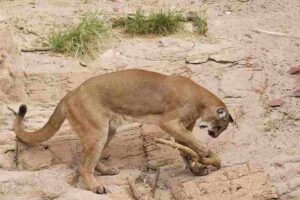
4). Omnivores
Omnivores are an important biotic component of the Mojave Desert ecosystem, and they contribute to sustainability in the food web of this arid biome. Examples of omnivores that are found in the Mojave Desert include the coyote and the raven. These animals have evolved to thrive in a challenging desert environment where food resources can be limited and varied.
Ecological Relevance and Functions of Omnivores
Dietary flexibility, seed dispersal, carrion consumption, top-down control, impact on plant communities, and predator-prey dynamics, can all be used to assess the ecological relevance and functions of desert omnivores.
Desert omnivores have a broad diet that comprises of both animal and plant matter. This flexibility is beneficial in an environment where food availability can be unpredictable.
Also, omnivores may contribute to seed dispersal by consuming fruits and subsequently excreting the seeds at different locations. This aids in the dispersal and germination of desert plants.
Ravens represent omnivores that often feed on carrion, which refers to the remains of dead animals. This scavenging behavior helps in recycling nutrients back into the resource-pool of the ecosystem, and supports decomposer populations.
As predators of smaller animals and scavengers of organic remains, omnivores help to regulate the populations of other consumer species while contributing to the overall ecological equilibrium in the desert.
Omnivores are capable of influencing plant populations by consuming seeds and fruits. This predation can affect the distribution and abundance of plant species in the Mojave Desert.
Complex predator-prey relationships in the desert ecosystem include omnivores as a core component. Their presence helps maintain such dynamics and prevent overpopulation of lower trophic organisms.
Two well-known examples of successful desert omnivores, in the Mojave Desert; are the coyote and the raven; which can be classified together with others like; inland bearded dragon and white-tailed antelope squirrel that consume insects and plant materials.
These species have tolerant of the harsh desert conditions and have diversified diets that include both plant and animal resources.
5). Decomposers: One of the Mojave Desert Biotic Factors
Decomposers are vital biotic factors in the Mojave Desert ecosystem.
They consist of various organisms, which include vultures, termites, dung beetles, bacteria, earthworms, millipedes, mushrooms, and even scorpions. These decomposers serve a fundamental role in breaking down and recycling organic resources, including remains of dead plants and animals, in the desert environment.
Ecological Relevance and Functions of Decomposers
Discussions of the ecological relevance and functions of decomposers in the Mojave Desert revolve around nutrient cycling, detritus management, soil improvement, energy flow, and disease control.
Decomposers are responsible for breaking down organic waste material into simpler products. In the process of biodegradation, they release valuable nutrients back into the soil, making them available for uptake by plants and other organisms.
Also, decomposers have a critical role to play in managing detritus, which includes fallen leaves, dead animal remains, and woody debris. By breaking down this detritus, they help to prevent the accumulation of organic waste that could otherwise smother plant growth and cause pollution.
Earthworms, bacteria, and fungi, among other decomposers, enhance soil quality by aerating the soil, increasing its porosity, and enriching it with organic matter. This function contributes to improved soil fertility and plant growth in deserts.
Decomposers facilitate the transfer of energy from organic remains to the living organisms in trophic levels by converting the complex organic substrate into simpler forms that can be consumed by scavengers and taken up by autotrophs.
Controlling the spread of diseases is achieved by decomposers, by breaking down and eliminating dead organisms, preventing the proliferation of pathogens.
Well-known examples of decomposers in the Mojave Desert include vultures. These scavenging birds play a crucial role in removing carrion (dead animals) from the environment, preventing disease spread, and recycling nutrients into the ecosystem.
In addition to vultures, the decomposer community includes various insects like termites, dung beetles, and millipedes, as well as microorganisms such as bacteria and fungi.
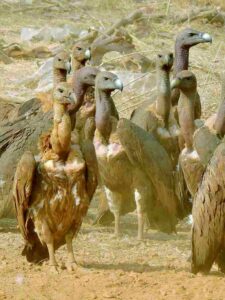
6). Mutualism
Mutualism is a significant biotic factor in the Mojave Desert, which contributes to the ecological stability of this harsh environment. Mutualism is itself a type of symbiotic relationship between two different species, where both organisms involved tend to benefit from the interaction. This cooperation is a crucial aspect of the Mojave Desert ecosystem.
Ecologic Relevance and Functions of Mutualism in the Mojave Desert
Areas where mutualism is important in the Mojave Desert include; seed dispersal, pollination, nutrient cycling, protection, and energy transfer.
Many plants in the Mojave Desert rely on mutualistic relationships with animals for seed dispersal. For example, animals like ground squirrels, kangaroo rats, and birds feed on the fruits and seeds of desert plants. In the process of consuming these plants, they help to disperse seeds across the desert, thereby promoting plant reproduction.
Several desert plant species also depend on mutualistic relationships with pollinators like bees, wasps, butterflies, and hummingbirds. These pollinators visit the flowers of desert plants to collect nectar and pollen. As they move from flower to flower, they facilitate the transfer of pollen; an event which is essential for plant reproduction.
In some cases, mutualistic interactions involve active nutrient cycling. For example, mycorrhizal fungi form mutualistic associations with the roots of many desert plants. These fungi help the plants to access essential nutrients, particularly phosphorus and water, from the arid soil.
Mutualistic relationships can provide protection to one or both involved partners. An example in the Mojave Desert is the relationship between ants and aphids. Some ants protect aphids from predators while benefiting from the sugary secretions produced by the aphids.
Lastly, in mutualistic interactions involving seed dispersal and pollination, energy is transferred from plants to animals. Desert plants provide nourishment to these animals, and in return, they assist plants in their reproductive processes.
Example of Mutualism in the Mojave Desert
An example of mutualism in the Mojave Desert is the relationship between the Phainopepla, a bird species, and the desert mistletoe. Here, the Phainopepla eats the mistletoe berries, gaining energy from this food source.
On the other hand, the desert mistletoe benefits from this interaction when the bird excretes its seeds onto the ground, thereby allowing new mistletoe plants to grow.
This mutualistic relationship is instrumental for the dispersal and germination of desert mistletoe seeds, which helps this plant species to thrive in the desert ecosystem.
7). Parasitism: One of the Mojave Desert Biotic Factors
Parasitism is a biotic factor that is evident in the Mojave Desert, and it contributes significantly to shaping the dynamics of this ecosystem. Parasitism can be described as a type of symbiotic relationship in which one organism benefits at the expense of another. These interactions have ecological relevance and functions in the desert.
Ecologic Relevance and Functions of Parasitism
Resource exploitation, impact on hosts, and species interactions, are all indicative of the relevance and functions of parasitism in the Mojave Desert.
Parasitic plants like desert mistletoe rely on parasitism to obtain essential resources, such as water and minerals, from their host plants. These plants are often adapted to arid environments and tap into the resources of their host plants to survive.
Parasites can have detrimental effects on their host organisms. In the Mojave Desert, the desert mistletoe can parasitize various shrubs and trees, including acacia and desert willow. The presence of these parasites can weaken and, in some cases, harm kill plants by draining their resources.
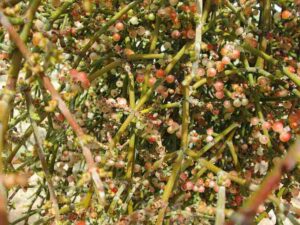
Also, parasitism can alter species interactions and the competitive balance in the desert ecosystem. It can impact the distribution and abundance of both the parasites and their host species.
Example of Parasitism in the Mojave Desert
An example of parasitism in the Mojave Desert is the interaction between desert mistletoe and mesquite or desert willow trees. Desert mistletoe is a parasitic plant that attaches itself to the branches of desert willow trees.
While the mistletoe benefits from acquiring nutrients from the willow tree, the willow tree may be harmed as it loses resources through this parasitic relationship. This dynamic exemplifies the cost that some host plants bear due to parasitism.
*Symbiotic Relationships in the Mojave Desert
In addition to parasitism, there are other types of symbiotic relationships present in the Mojave Desert. One example is mutualism, as mentioned earlier, where species like the phainopepla and desert mistletoe engage in a mutually beneficial interaction. Another example is commensalism.
Commensalistic relationships are interactions where one species benefits, and the other is neither harmed nor helped. In the Mojave Desert, you can observe examples of commensalism, such as some epiphytes like caninervis moss growing on shrubs and trees. Moss benefits from gaining access to light as well as shade from extreme heat; while the tree does not have a significant impact, either positively or negatively.
8). Predation
Predation is a major biotic factor in the Mojave Desert and is instrumental in defining the ecosystem's dynamics. Predation, a biological interaction, involves one species (called the predator) capturing and feeding on another species, often referred to as the prey.
In the Mojave Desert, various predators and prey species coexist and form intricate ecological relationships.
Ecologic Relevance and Functions of Predation in the Mojave Desert
Factors that highlight the ecologic relevance and functions of predation in the Mojave Desert are; regulation of prey populations, selective pressure, energy flow, biodiversity maintenance, and control of prey behavior.
Predation functions as a natural regulatory mechanism for prey populations in the Mojave Desert. Predatory organisms such as coyotes, cougars, foxes, and raptors help to control the numbers of prey species like desert cottontails, rodents, and birds.
Predation exerts selective pressure on prey species. Over time, this can lead to the development of evolutionary adaptations in prey organisms, such as enhanced camouflage, agility, or defensive mechanisms, all aimed to reduce their vulnerability to predation.
Predators occupy higher trophic levels in the food web and preside over the process of energy transfer within the ecosystem. By consuming prey, they acquire energy and nutrients, and contribute to the flow of such resources through the desert trophic structure.
The presence of predators can promote biodiversity in the Mojave Desert, by preventing any single prey species from out-competing others and becoming excessively dominant. This diversity in turn contributes to the resilience of the ecosystem.
Lastly, predation pressure can influence the behavior and activity patterns of prey species. Prey may become more nocturnal, learn to seek refuge in burrows or dense vegetation, or develop other strategies to detect and evade predators.
Predators in the Mojave Desert
Several predators are part of the Mojave Desert's ecological tapestry. Predators in the Mojave Desert include; coyotes; cougars, foxes, raptors and bobcats.
Coyotes are opportunistic predators that hunt a broad variety of prey, including desert cottontails, rodents, and birds. They are active predators in the desert ecosystem.
Cougars, also known as mountain lions, usually function as top predators that make vital contributions to controlling prey populations. They often feed on ungulates, but may prey on smaller mammals as well.
True foxes and kit foxes are found in the Mojave Desert and contribute to predation on smaller prey species like rodents and birds.
Birds of prey, such as hawks and eagles, are efficient hunters that are versatile, and involved in keeping rodent populations in check.
Bobcats are skilled feline hunters that are smaller than cougars and target small mammals, including desert cottontails.
In the Mojave Desert, the predator-prey interactions emphasize the complexity and equilibrium of biotic processes and resources within the ecosystem. These relationships are integral to the desert's ecology, and contribute to its genealogical diversity and long-term sustainability.
9). Competition: One of the Mojave Desert Biotic Factors
Competition is another notable biotic factor in the Mojave Desert, which influences the distribution and abundance of species. In ecology, competition can be defined as the struggle for limited resources between individuals or species within an ecosystem. These resources can include food, water, shelter, mates, and territory.
Ecologic Relevance and Functions of Competition in the Mojave Desert
Factors pointing to the ecologic relevance and functions of competition in the Mojave Desert include; resource scarcity, niche differentiation, population regulation, diversity maintenance, influence on behavior, and evolutionary pressures.
The Mojave Desert is characterized by arid and challenging conditions, which generally result in limited resources. Competition arises as species must vie for these limited resources, especially water and food.
Competition can lead to niche differentiation, a scenario where different species adapt to utilize resources in different ways. In the Mojave Desert, species have evolved specific adaptations to utilize scarce resources effectively.
Also, competition can act as a natural regulatory force for populations. When resources are scarce, some individuals may not access enough resources, leading to exclusion, with reduced growth rates, reproduction, or survival.
The presence of competition may contribute to biodiversity. In the Mojave Desert, numerous species coexist, each occupying slightly different ecological niches and adopting diverse survival strategies to minimize direct competition.
Competition can define the behavior of species in the desert. It may lead to territoriality, where individuals establish and defend territories to secure vital resources.
Ongoing competition exerts evolutionary pressures on species to develop adaptations that help enhance their competitive advantage. For example, efficient water uptake and use mechanisms have evolved in many Mojave Desert plants.
Example in the Mojave Desert
One example of competition in the Mojave Desert is the potential exploitative struggle for resources between desert kit foxes (Vulpes macrotis arsipus) and coyotes (Canis latrans). Both of these carnivorous species share similar ecological niches and dietary preferences, which include small mammalian prey and territorial space.
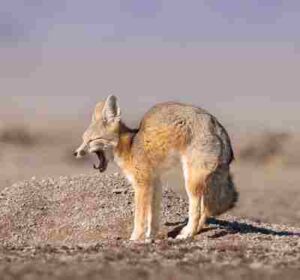
Functions of Competition in the Mojave Desert
Functions of competition in the Mojave Desert include; resource partitioning, population regulation, species coexistence, and adaptive evolution.
In order to reduce competition, species may partition resources by adjusting their foraging times, preferences, or hunting strategies. For example, kit foxes and coyotes may hunt at different times or focus on different prey types.
Intense competition can lead to fluctuations in the trends and attributes of populations. When shared resources are abundant, populations may increase, but during resource scarcity, competition may lead to adverse population declines.
Competition in the Mojave Desert has likely played an active role in maintaining the coexistence of multiple species with similar resource needs. Here, each species has developed specific adaptations to access resources.
Over time, species tend to evolve adaptations that enhance their ability to compete efficiently for limited resources. This can include physiological adaptations, such as water conservation and heat tolerance mechanisms in desert plants.
Conclusion
Mojave Desert biotic factors are;
1. Producers
2. Herbivores
3. Carnivores
4. Omnivores
5. Decomposers
6. Mutualism
7. Parasitism
8. Predation
9. Competition
